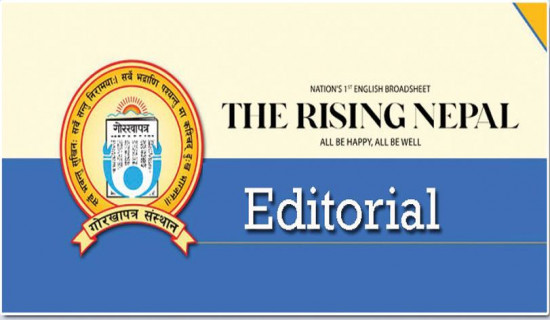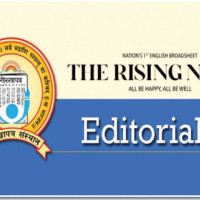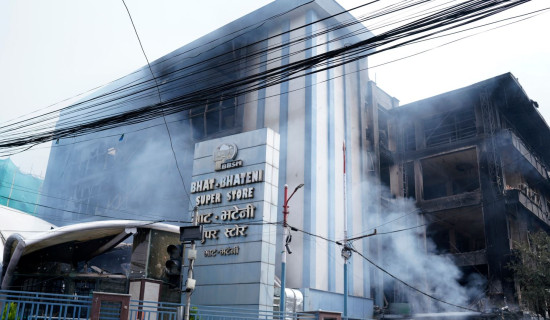- Saturday, 13 September 2025
Economy On The Mend
It is encouraging to note that Nepal's economy has made some improvement lately, demonstrating how well the policies put in place by the government and central bank have worked. According to a study by the Nepal Rastra Bank (NRB), the fresh improvements in foreign currency reserves, remittance inflow, and the balance of payments (BoP) position may be attributed to a severe import restriction that significantly lessened the external strain on the economy. The fact that the BoP is in surplus and that the current account deficit is declining is evidence of the nation's capacity to control its trade imbalance. This has been accomplished through raising exports and enhancing macroeconomic management, which has led to a decline in imports. The decreasing trade deficit indicates increased financial stability for our country, which is encouraging for both local and foreign investors. Additionally, it shows that business conditions are improving, which may result in increased exports and further advance our economy.
A current macroeconomic and financial report based on the first five months of the current fiscal year published by NRB on Friday shows that gross foreign exchange reserves increased by 6.3 per cent to Rs. 1292.56 billion in mid-December 2022 from Rs.1215.80 billion in mid-July 2022. In the US dollar terms, the gross foreign exchange reserves increased by 3 per cent to 9.82 billion in mid-December 2022 from 9.54 billion in mid-July 2022. Foreign exchange reserves of the banking sector are sufficient to cover the prospective merchandise imports of 10 months, and merchandise and services imports of 8.7 months. In the meantime, the country's trade deficit has decreased by 18.8 per cent to Rs. 597 billion during the first five months of the current fiscal year as compared to the same period last year.
Likewise, remittance inflows increased by 23 per cent to Rs. 480.50 billion in the review period against a decrease of 6.3 per cent in the same period of the previous fiscal year. In the US dollar terms, remittance inflows increased by 13.1 per cent to 3.71 billion in the review period against a decrease of 6.8 per cent in the same period of the previous year. Similarly, BoP remained at a surplus of Rs. 45.87 billion in the review period compared to a deficit of Rs. 195.01 billion in the same period of the previous year. In US dollar terms, the BoP remained at a surplus of 346.8 million in the review period against a deficit of 1.64 billion in the same period of the previous year.
The impact of the government's positive steps on improving the economic situation has led to the recent decline in import and trade deficit. The government should continue working on maintaining reforms. This will not only help reduce the trade deficit but also boost economic growth. In the meantime, it is crucial that the central bank monitor the current economic situation and impose necessary monetary and financial measures to ensure stability and economic growth. The central bank can enforce other appropriate measures, such as expansionary fiscal policies or quantitative easing, to stimulate activity in an economy like ours when it needs a boost. By monitoring the economy carefully and taking these proactive steps, the central bank can help make sure that our economy stays afloat even in times of difficulty such as the current one. Despite this noticeable achievement, there is still room for improvement. The government must attract foreign investments in production and other sectors to keep the economic activities at an optimum level.
















